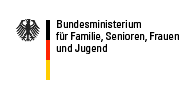Boys and girls of different origins
Equal treatment in school of boys and girls of different origins: findings of scientific studies
If gender is to be integrated into educational planning, then access to education and thereby to life opportunities must be opened up for girls and boys equally and for different girls and different boys in a way which ensures them equal treatment. What is the impact of what differences?
Signs: Children and young people from an immigrant background are significantly less academically successful than their peers who do not come from an immigrant background. Indicators for this include:
Lack of data: To date there are no official, representative data in Germany that permit differentiated statements concerning the connection between the gender of children and young people from an immigrant background and their participation in education. There is an urgent requirement for research in this area. Closing gaps in data is absolutely necessary for a meaningful education policy that is differentiated in terms of target groups and also integrates the strategy Gender Mainstreaming.
Combined discrimination: Immigrants more frequently live in precarious economic circumstances than non-immigrants. In view of the fact that there is, according to PISA, the International Elementary School Reading Study (IGLU, the German version of PIRLS (Progress in International Reading Literacy Study)) and the German elementary school comparison in 6 federal states (IGLU-E), a connection for German children and young people (as well) between origin in a certain social class and academic success, there is an indication here of combined discrimination. The studies came to the following conclusions:
Signs: Children and young people from an immigrant background are significantly less academically successful than their peers who do not come from an immigrant background. Indicators for this include:
- a disproportionately high number of children from an immigrant background leave school with Hauptschule (upper elementary school) diploma or no qualifications at all and a lower than average proportion of them leave school with a junior high school (Realschule) diploma or graduate from high school;
- a disproportionately low number of children from an immigrant background are recommended for move from elementary school (Grundschule) to high school (Gymnasium);
- a disproportionately high number of children from an immigrant background fail to be promoted in all grades and types of school;
- a disproportionately high number of children from an immigrant background are sent to special schools for children with learning difficulties.
Lack of data: To date there are no official, representative data in Germany that permit differentiated statements concerning the connection between the gender of children and young people from an immigrant background and their participation in education. There is an urgent requirement for research in this area. Closing gaps in data is absolutely necessary for a meaningful education policy that is differentiated in terms of target groups and also integrates the strategy Gender Mainstreaming.
Combined discrimination: Immigrants more frequently live in precarious economic circumstances than non-immigrants. In view of the fact that there is, according to PISA, the International Elementary School Reading Study (IGLU, the German version of PIRLS (Progress in International Reading Literacy Study)) and the German elementary school comparison in 6 federal states (IGLU-E), a connection for German children and young people (as well) between origin in a certain social class and academic success, there is an indication here of combined discrimination. The studies came to the following conclusions:
- Only one-third of German fourth-graders with very good grades are recommended for the Realschule (junior high school) or Hauptschule (upper elementary school).
- The chances that a child from a “good home” will be recommended for the Gymnasium, or high school, are on average more than two-and-a-half times higher than those of a child from a socially-vulnerable class, even if their level of skills is the same.
- 90 % of the students at universities and other higher education institutions are not from working class families.
- The difference in mean reading skills between 15-year-olds from families in the top quadrant and from families in the bottom quadrant of the social structure is greatest in Germany, of 32 countries studied.
Sources:
Artelt, Cordula, et al. (Hg.): PISA 2000 - Zusammenfassung zentraler Befunde, Max-Planck-Institut für Bildungsforschung Berlin 2001, unter http://www.pisa.oecd.org/dataoecd/30/63/33684930.pdf.
Bos, Wilfried et al. (Hg.): Erste Ergebnisse aus IGLU - Schülerleistungen am Ende der vierten Jahrgangsstufe im internationalen Vergleich, Waxmann 2004, unter http://www.erzwiss.uni-hamburg.de/IGLU/home.htm.
Bos, Wilfried et al. (Hg.): IGLU - Einige Länder der Bundesrepublik Deutschland im nationalen und internationalen Vergleich, Waxmann 2004, unter http://www.erzwiss.uni-hamburg.de/IGLU/home.htm.
Bund-Länder-Kommission für Bildungsplanung und Forschungsförderung (Hg.): Förderung von Kindern und Jugendlichen mit Migrationshintergrund (Gutachten), Heft 107, Bonn 2003.
Hewartz-Emden, Leonie, Westphal, Manuela: Akkulturationsstrategien im Generationen- und Geschlechtervergleich bei eingewanderten Familien, in: Sachverständigenkommission 6. Familienbericht (Hg.): Familien ausländischer Herkunft in Deutschland: Empirische Beiträger zur Familienentwicklung und Akkulturation. Materialen zum 6. Familienbericht, Band 1, Opladen 2000.
Bos, Wilfried et al. (Hg.): Erste Ergebnisse aus IGLU - Schülerleistungen am Ende der vierten Jahrgangsstufe im internationalen Vergleich, Waxmann 2004, unter http://www.erzwiss.uni-hamburg.de/IGLU/home.htm.
Bos, Wilfried et al. (Hg.): IGLU - Einige Länder der Bundesrepublik Deutschland im nationalen und internationalen Vergleich, Waxmann 2004, unter http://www.erzwiss.uni-hamburg.de/IGLU/home.htm.
Bund-Länder-Kommission für Bildungsplanung und Forschungsförderung (Hg.): Förderung von Kindern und Jugendlichen mit Migrationshintergrund (Gutachten), Heft 107, Bonn 2003.
Hewartz-Emden, Leonie, Westphal, Manuela: Akkulturationsstrategien im Generationen- und Geschlechtervergleich bei eingewanderten Familien, in: Sachverständigenkommission 6. Familienbericht (Hg.): Familien ausländischer Herkunft in Deutschland: Empirische Beiträger zur Familienentwicklung und Akkulturation. Materialen zum 6. Familienbericht, Band 1, Opladen 2000.
erstellt von Administrator
—
zuletzt verändert:
02.01.2010 20:08





